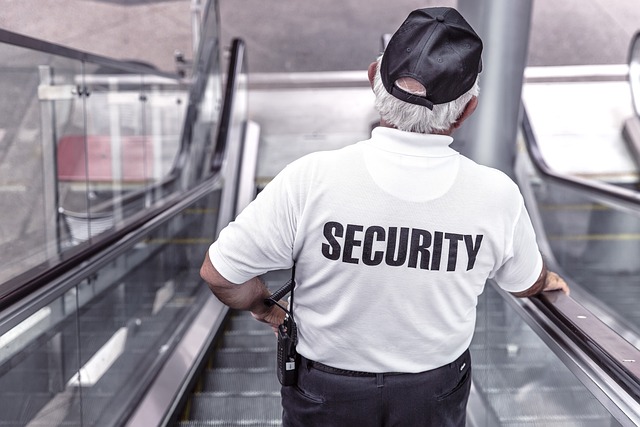The integration of hands-free lighting systems has significantly improved the operational efficiency and effectiveness of security personnel by providing a reliable and versatile alternative to traditional handheld flashlights. These advanced systems ensure that officers can keep their hands free for critical tasks while maintaining full visibility in low-light conditions. Hands-free options like wearable lights integrated into smart glasses or helmets are equipped with motion sensors and advanced optics, offering precise illumination when needed and enhancing safety during nighttime operations. The adoption of these systems reflects a commitment to evolving security technology, with the potential for further advancements such as augmented reality (AR) overlays and artificial intelligence (AI) integration for environmental analysis and threat detection. Flashlights for security personnel are thus becoming more sophisticated tools that not only support physical well-being but also bolster tactical readiness, ensuring that security operations are conducted with the highest level of effectiveness and safety standards in place.
In the realm of security operations, the role of illumination is pivotal. As flashlights for security personnel evolve beyond traditional handheld devices, hands-free lighting technologies have emerged as a game-changer. This article delves into the transformative impact of these advancements, enhancing both the effectiveness and safety of nighttime surveillance and patrolling. We will explore how these innovations contribute to crime prevention and deterrence, their integration into security protocols, and the promising trends shaping their future in the industry. Join us as we shed light on the benefits and developments in hands-free lighting systems that are redefining the landscape for security officers.
- Advancements in Hands-Free Lighting Technologies for Enhanced Security Patrols
- The Role of Flashlights for Security Personnel in Modern Security Operations
- Benefits of Hands-Free Flashlights for Nighttime Surveillance and Patrolling
- Evaluating the Efficacy of Hands-Free Lights in Crime Prevention and Deterrence
- Comparing Traditional Flashlights with Hands-Free Options for Security Use
- Integrating Hands-Free Lighting Systems into Security Protocols and Training Programs
- Future Trends: The Evolution of Hands-Free Flashlight Technology in the Security Sector
Advancements in Hands-Free Lighting Technologies for Enhanced Security Patrols

The realm of security operations has undergone significant enhancements with the advent of hands-free lighting technologies, particularly for security personnel who rely on reliable and efficient light sources during patrols. Traditional flashlights for security personnel were limited by their ergonomic design, which could lead to fatigue over extended use. However, the latest advancements in hands-free lighting solutions have addressed these issues head-on, providing a more sustainable way for officers to maintain visibility without the strain of holding a device for hours. These innovative technologies include wearable lights integrated into smart glasses or helmets, allowing security personnel to keep their hands free for other critical tasks. Furthermore, the integration of motion sensors and advanced optics in these devices ensures that the light is directed precisely where it’s needed, improving both safety and efficiency during nighttime operations. The evolution of flashlights for security personnel into hands-free systems not only enhances the officers’ operational capabilities but also signals a shift towards smarter, more adaptive security technologies that are poised to reshape the industry.
The Role of Flashlights for Security Personnel in Modern Security Operations

Flashlights for security personnel serve as critical tools in modern security operations, enhancing situational awareness and providing illumination in low-light conditions. These devices are essential for conducting thorough searches during patrols or inspections, enabling officers to detect potential hazards or evidence with greater clarity. The advanced models now come equipped with hands-free capabilities, allowing security personnel to operate them without the need to hold the device, thus maintaining a ready stance and keeping their hands available for other critical tasks. This feature is particularly beneficial when officers must navigate through tight spaces or use both hands for other duties, such as document handling or operating communication devices. Additionally, modern flashlights often incorporate features like adjustable brightness settings, which help conserve battery life during less intense situations while providing a powerful beam when higher luminosity is required. The integration of LED technology in these flashlights not only extends their lifespan but also ensures a consistent light output, which is crucial for night-time surveillance and emergency response scenarios. By equipping security officers with the most up-to-date hands-free lighting solutions, security forces can enhance operational efficiency and improve safety outcomes for both personnel and the public they protect.
Benefits of Hands-Free Flashlights for Nighttime Surveillance and Patrolling

The integration of hands-free flashlights into the arsenal of security personnel has significantly enhanced nighttime surveillance and patrolling operations. These devices offer a myriad of benefits that contribute to both the efficiency and safety of security officers on duty. Unlike traditional flashlights that require manual operation, hands-free models allow security forces to maintain a firm grip on their weapons or other equipment, ensuring they are always prepared for any situation. This seamless integration of light as an extension of their presence is invaluable when navigating dark environments, as it provides consistent illumination without the need to manually adjust the beam, thus enabling officers to keep their focus on their surroundings and potential threats.
Furthermore, hands-free flashlights for security personnel are designed with durability and longevity in mind, often featuring robust construction and impact-resistant materials. They are engineered to be worn on helmets or headgear, freeing up the officer’s hands to perform critical tasks or make rapid adjustments as needed. The lightweight and ergonomic design of these flashlights also minimizes the burden on the neck and head, a significant advantage during extended patrols. This technology not only supports the physical well-being of security officers but also enhances their operational capabilities by allowing both hands to remain available for action at all times, making them indispensable tools in the field of nighttime security operations.
Evaluating the Efficacy of Hands-Free Lights in Crime Prevention and Deterrence

Comparing Traditional Flashlights with Hands-Free Options for Security Use

In the realm of security operations, flashlights for security personnel have traditionally been a staple tool, providing them with illumination in low-light conditions and serving as a deterrent to potential threats. However, the dynamics of security work are evolving, necessitating advancements in lighting technology. Hands-free lighting options represent a significant shift from the conventional flashlights that have long been relied upon. These innovative solutions, such as headlamps and smart glasses, free up the officer’s hands to perform other critical tasks, enhancing their situational awareness and response capabilities. Unlike the single-point illumination of traditional flashlights, hands-free options can provide a broader field of vision, allowing security personnel to maintain vigilance while navigating through environments without the risk of dropping their light source or having it obstructed by their own hands. This adaptability not only improves safety for the officers but also potentially elevates the quality of their security work, as they can now keep their hands ready for immediate action while still illuminating their surroundings effectively. The transition from traditional flashlights to hands-free lighting systems is a testament to the ongoing commitment to innovation and efficiency in security personnel’ equipment, ensuring they are equipped to handle modern demands.
Integrating Hands-Free Lighting Systems into Security Protocols and Training Programs

Integrating hands-free lighting systems into security protocols enhances the efficiency and effectiveness of security officers’ tasks. These systems free up the hands of security personnel, allowing them to maintain a clear line of defense while ensuring that surroundings are well-illuminated. Flashlights for security personnel have traditionally been a staple in their toolkits; however, the transition to hands-free solutions represents a significant advancement. The hands-free design allows officers to navigate through various environments with both hands ready for action, whether it’s conducting checks, documenting observations, or responding to incidents. This not only improves situational awareness but also supports continuous operation without the need for periodic manual adjustments, which can be time-consuming and may compromise safety in dynamic situations.
Moreover, incorporating these systems into security training programs ensures that officers are proficient with the technology. It is crucial to familiarize security personnel with the capabilities of hands-free lighting, enabling them to integrate it seamlessly into their patrol routines. Training also highlights the importance of situational adaptability, as hands-free lights can be mounted on helmets, weaponary, or body cameras, providing flexible illumination that adjusts to the demands of each situation. This integration not only optimizes the officers’ operational readiness but also underscores the commitment to modernizing security measures with innovative technology solutions. Flashlights for security personnel will continue to be a valuable component of their equipment, now complemented by the adaptability and reliability of hands-free lighting systems.
Future Trends: The Evolution of Hands-Free Flashlight Technology in the Security Sector

As security demands evolve, hands-free flashlight technology has become increasingly sophisticated, offering security personnel enhanced capabilities to navigate challenging environments while maintaining situational awareness and readiness. The future trends in this sector point towards an integration of advanced features such as augmented reality overlays, which can project critical data directly into the user’s field of vision. This development will enable officers to have both hands free for defensive or other tactical maneuvers while still benefiting from the illumination and information they require. Additionally, the incorporation of AI-driven analytics within these devices is expected to heighten their functionality. These systems can analyze the environment, detect potential threats, and even adjust lighting patterns to optimize visibility without compromising an officer’s operational flexibility. The evolution of flashlights for security personnel is not only about brighter lights or longer battery life; it’s about creating smarter tools that augment human capabilities and improve the safety and effectiveness of security operations in the field.
In conclusion, the evolution and integration of hands-free lighting technologies into the toolkit of security officers have significantly enhanced their operational efficiency and effectiveness. Flashlights for security personnel have transitioned from a manual to an automated system, enabling them to maintain vigilance without the constraints of handheld devices. The benefits of these advancements are manifold, ranging from improved ergonomics to augmented situational awareness during nighttime patrols. As noted in our discussion on the efficacy of hands-free lights in crime prevention and deterrence, the visibility they provide acts as a powerful disincentive for criminal activity. The article has outlined the transformative impact of these technologies, not only in day-to-day security operations but also in the long-term strategies and training programs that are being redesigned to incorporate this innovation. As hands-free lighting systems continue to advance, their role in the security sector is set to become even more pivotal. Security personnel equipped with these technologies stand at the forefront of adopting this shift, ensuring they remain at the cutting edge of their field.
